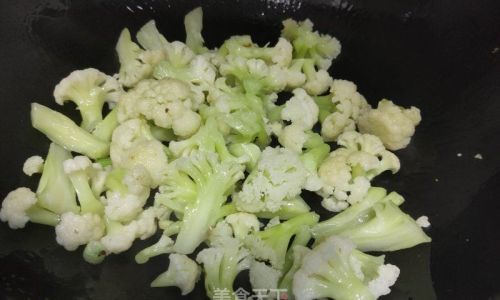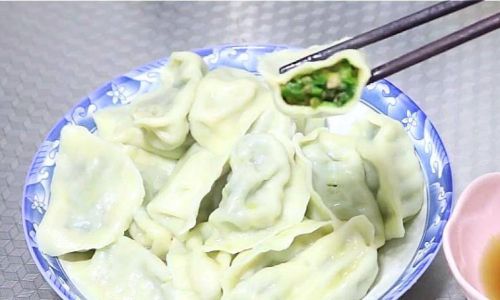Introduction
In the realm of culinary arts, stir-frying stands as a testament to the beauty of simplicity and efficiency. This cooking technique, originating from Chinese cuisine, perfectly balances rapid heat application with minimal oil usage, resulting in dishes that are both nutritious and flavorful. Among the myriad of vegetables that lend themselves well to stir-frying, organic cauliflower holds a special place. Its delicate florets, packed with nutrients and a subtle sweetness, transform into a delightful medley of textures and tastes when prepared correctly. This guide aims to empower you with the knowledge and skills necessary to create a masterpiece of a stir-fried organic cauliflower dish that will delight your taste buds and nourish your body.
Understanding Organic Cauliflower
Before diving into the stir-frying process, it’s crucial to understand the unique attributes of organic cauliflower. Organic produce, by definition, is grown without the use of synthetic fertilizers, pesticides, or genetically modified organisms (GMOs). This farming practice not only preserves the integrity of the soil but also ensures that the produce retains higher levels of natural nutrients and antioxidants. Cauliflower, in particular, is rich in vitamins C and K, fiber, and various beneficial plant compounds.

When selecting organic cauliflower, look for firm, compact heads with tight, evenly colored florets. Avoid those with discoloration, soft spots, or an unpleasant odor. Freshness is key; the sooner you cook it after purchasing, the better its flavor and texture will be.
Preparing the Ingredients
The success of any stir-fry lies in the meticulous preparation of ingredients. Here’s a comprehensive list of what you’ll need for a basic yet exquisite stir-fried organic cauliflower dish, along with instructions on how to prepare them:
- Organic Cauliflower: 1 medium head, trimmed and cut into bite-sized florets.
- Garlic: 3-4 cloves, minced. Garlic adds a depth of flavor that’s indispensable in stir-fries.
- Fresh Ginger: 1 tablespoon, finely grated. Ginger provides a refreshing, slightly spicy note.
- Scallions: 3-4 stalks, sliced thinly on the diagonal. They add a burst of color and mild onion flavor.
- Vegetable Oil: 2-3 tablespoons. Choose a high-quality, neutral-flavored oil like canola or grapeseed for optimal stir-frying.
- Soy Sauce: 2 tablespoons. Use low-sodium soy sauce to control sodium intake.
- Sesame Oil: 1 teaspoon. This adds a nutty, aromatic finish.
- Oyster Sauce (optional): 1 tablespoon. For added umami and richness.
- Salt and Pepper: To taste. Adjust according to your preference.
- Red Pepper Flakes (optional): A pinch for a hint of heat.
Step-by-Step Stir-Frying Process
Preheat Your Pan
Begin by placing a large, flat-bottomed wok or skillet over high heat. Preheating the pan is crucial for achieving that perfect sear on the vegetables, locking in flavors and textures.
Add Oil
Once the pan is hot, pour in the vegetable oil and swirl it around to coat the bottom evenly. The oil should shimmer but not smoke.
Aromatics In

Immediately add the minced garlic and grated ginger. Stir-fry for about 10-15 seconds until fragrant but not burnt. This step is known as “sautéing the aromatics” and forms the flavor foundation of your dish.
Cauliflower Florets
Add the prepared cauliflower florets to the pan in a single layer, if possible. If the pan is too crowded, the vegetables will steam rather than stir-fry. Stir occasionally, ensuring even cooking. The goal is to achieve a golden-brown color on the edges of the florets. This process can take 3-5 minutes depending on the heat intensity and the size of the florets.
Seasoning
Once the cauliflower starts to develop a nice color, drizzle in the soy sauce and, if using, the oyster sauce. Stir well to coat each floret evenly. The soy sauce will add saltiness and a subtle umami flavor, while the oyster sauce (if included) will enrich the dish further.
Final Touches
Add the sliced scallions and continue to stir-fry for another minute until the scallions are wilted but still bright green. At this point, you can also add a pinch of red pepper flakes for a bit of heat, if desired.
Taste and Adjust
Before removing the pan from heat, taste the cauliflower and adjust the seasoning with salt and pepper as needed. Remember, soy sauce already contains salt, so be cautious when adding more.

Finishing with Sesame Oil
Off the heat, drizzle in the sesame oil and stir gently to incorporate. Sesame oil’s nutty aroma and flavor will elevate the dish to a new level, but it’s important to add it at the end to prevent it from burning and turning bitter.
Serving and Enjoying
Transfer the stir-fried organic cauliflower to a serving dish and garnish with additional sliced scallions or a sprinkle of sesame seeds for an extra touch of elegance. Serve immediately while hot to enjoy the best texture and flavor. This dish pairs wonderfully with a variety of main courses, from grilled meats and seafood to tofu or tempeh stir-fries, making it a versatile addition to any meal.
Exploring Variations and Enhancements
While the basic recipe is delicious on its own, don’t be afraid to experiment with variations to suit your taste preferences or dietary needs. Here are a few ideas to inspire you:
- Vegetable Medley: Add other stir-fry-friendly vegetables like bell peppers, broccoli, snap peas, or baby corn for a colorful and nutrient-packed dish.
- Protein Boost: Incorporate tofu, tempeh, chicken, shrimp, or beef strips for a more filling meal.
- Sauce Innovations: Experiment with different sauces like hoisin, teriyaki, or a homemade chili garlic sauce to give your cauliflower stir-fry a unique twist.
- Herbal Infusions: Add fresh herbs like cilantro, basil, or mint at the end for a fresh, aromatic finish.
Conclusion
Stir-frying organic cauliflower is a delightful culinary journey that combines the art of precise cooking with the nourishment of wholesome ingredients. By following the steps outlined in this guide, you’ll be able to create a dish that is not only visually appealing but also bursting with flavors and textures. Remember, the key to a successful stir-fry lies in the balance of heat, timing, and seasoning. With practice, you’ll soon master this technique and be able to adapt it to your liking, creating endless variations of this simple yet elegant dish. Happy stir-frying!





0 comments